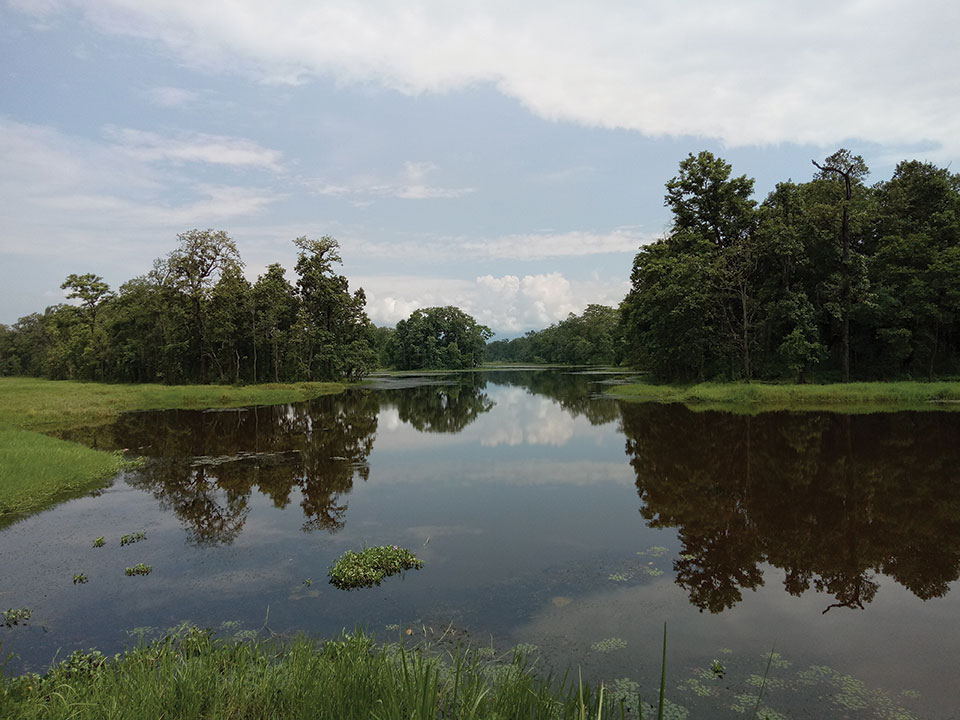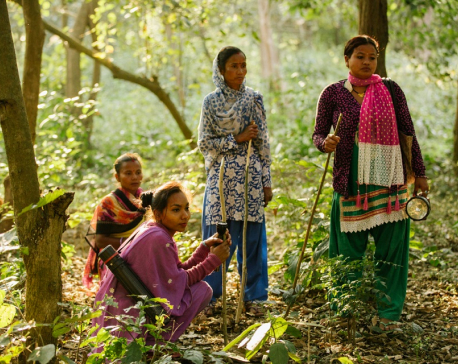
OR

More from Author
As Nepal embarks on decentralized environmental governance system it is important now more than ever to create a favorable environment to carry out environmental governance effectively
Nepal is currently celebrating National Wildlife Week with the theme ‘Let’s unite for wildlife conservation’. As the celebrations continue, we should perhaps think of ways to bridge the gaps that might be coming in the way of making this slogan a reality. And environmental governance at the local level is one such area that needs immediate attention.
As Nepal embarks on a decentralized environmental governance system with a changed federal structure wherein environmental responsibilities are divided into three tiers of government—central, provincial and local—it is important now more than ever to create a favorable environment at the local level to carry out environmental governance effectively.
Environmental governance is the means by which priorities related to management of natural resources are determined. While policies and frameworks are in place along with adequate funds being made available at the local level, lack of capacity and effective planning on the government front has left the execution of policies in a state of limbo.
Here are some good examples of existing environmental governance policies that showcase some of the efforts being undertaken at the local level which could be imbibed and replicated at other levels as well.
Efforts made
Some of the instances that prove how governments are making localizing cross-cutting issues such as climate change, disaster, and environment a priority at both the state and the local level are the inclusion of legal documents like Disaster Risk Reduction and Management Act (2017,) draft Climate Change Policy (CCP), 2019 and model planning guidelines for local government. Additionally, Local Governance and Operationalization Act (LGOA), 2017 stresses on considering three major pillars of sustainable development goals such as economic efficiency, social equity, and sustainable environment while formulating annual and periodical development plans.
Legislative parliament of the Far Western Province Government has recently endorsed the Environment Protection Act. Keeping in line with the act, the Far Western Government is already working towards developing the Far-west as an environmentally friendly state. It has also drafted forestry sector policies, acts, and regulations. Similarly, Gandaki Province government has drafted a policy for Forest and Watershed Management. Subsequently, climate change policies have also been drafted by the Gandaki State. In addition, sand, gravel, and stone mining guidelines have also been formulated by a few province governments.
The recent integration and formulation of environment and climate change issues in development plans can be seen as the beginning of decentralized environmental governance, at the local level. Further to which, few local government units have started integrating cross-cutting issues into their annual development plans. Godawari Municipality (Kailali), Turmakhand Rural Municipality (Achham), Bedkot Municipality (Kanchanpur), Funglin Municipality (Taplejung), Kamalamai Municipality (Sindhuli) Bhimdatta Municipality (Kanchanpur) and Thasang Rural Municipality (Mustang), to name a few, stand out in this respect.
But while all seems to be going well, there are some gaps that have been identified.
Gaps identified
Ministry of Federal Affairs and General Administration (MoFAGA) for the local level has provisions for Environment, Sanitation, and Disaster Management Units under the Infrastructure Development and Environment Management Section. Additionally, there is an arrangement for a ranger in municipalities that have a population of more than 25,000 people. Likewise, there is a position of an Assistant Forest Officer in Environment and Greenery Promotion Section under the Environment and Disaster Management Division of all metropolitan cities except for the federal ones. However, apart from a few municipalities, these positions remain vacant.
But not all hope is lost. Funds for climate change, forest development, environment protection, and disaster risk management have been brought into place at the local level. To add to it, Disaster Risk Management fund guidelines have been prepared by a few municipalities. As per the guidelines, a few local governments have initiated the allocation of resources to this fund. Substantial resources have been transferred into the local level from federal and provincial governments after the restructuring of the government.
And while this ignites optimism, unfortunately, a very small proportion of the total budget is being channelized into environment-friendly development activities at the local level. Major pie of the annual budgets of most of the local government units is being used in unplanned road construction, culvert maintenance, and community and school building in the rural areas.
Bridge the gaps
Evaluation and assessment show the inadequacy of human resource and institutional capacity for environmentally friendly construction at the local level. Perhaps fulfilling these gaps by mobilizing individuals or seeking technical assistance from international / non-government organizations could help bridge the gap by preparing both periodical and annual development plan that compliments the environment. In short, to achieve environment-friendly sustainable development goals, Nepal needs to invest more resources in establishing and strengthening environmental institutions at the local level at the earliest possible. The acts that are in place will only bear fruit if the local government appoints an authoritative body or person to ensure the implementation of the act to its fullest.
As Nepal observes Wildlife Week, it’s important to pause and think of the existing gaps in environmental governance and how they can be bridged to ensure that the conservation feats the nation has achieved are sustained, strengthened and multiplied in the days to come.
The author is a Policy and Governance Specialist at WWF Nepal
You May Like This

Community is the key
Despite only claiming less than 0.1 percent of the earth’s landmass, Nepal is filled with lessons when it comes to... Read More...

Speaker Mahara praises Chinese effort on environment conservation
KATHMANDU, July 22: Speaker Krishna Bahadur Mahara has said that he has been very impressed with the success achieved by... Read More...

Deforestation of Chure is a national problem: Ex-president Ram Baran Yadav
DHANUSHA, Oct 30: Former President Dr Ram Baran Yadav has said the government at all three levels should take the issue... Read More...




Just In
- Health ministry to conduct ‘search and vaccinate’ campaign on May 13
- Indian customs releases trucks carrying Nepali tea, halted across Kakarbhitta
- Silent period for by-election to begin from midnight
- SC issues short-term interim order to govt and TU not to take immediate action against TU legal advisor Khanal
- National consultation workshop advocates to scale up nutrition smart community in Nepal
- Patan High Court issues short-term interim order to halt selection process of NTB’s CEO
- NEPSE inches up 0.15 points; daily turnover increases to Rs 2.53 billion
- Bagmati Govt mandates tri-lingual signboards in offices















Leave A Comment